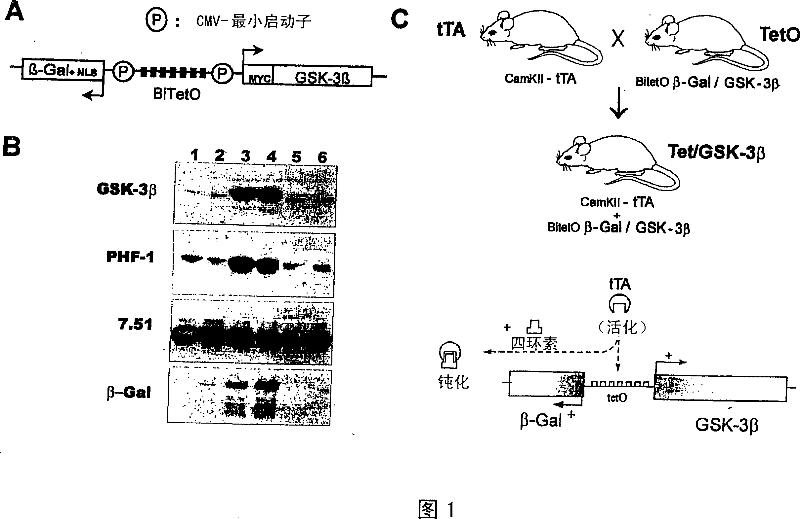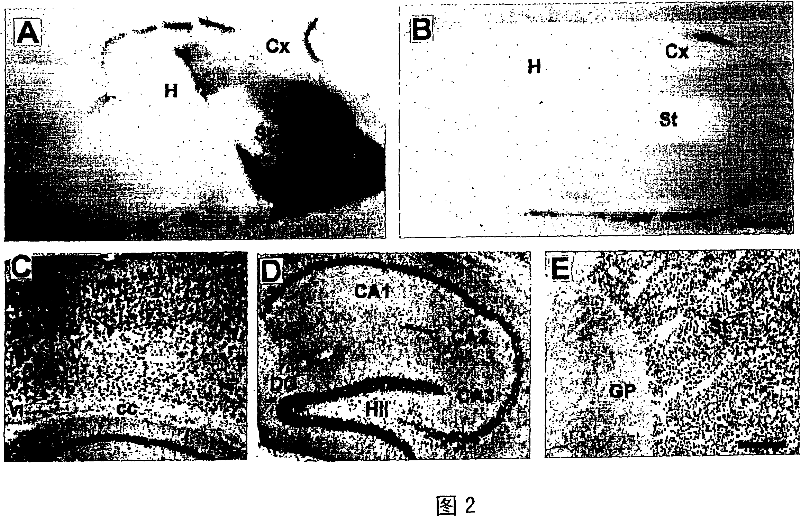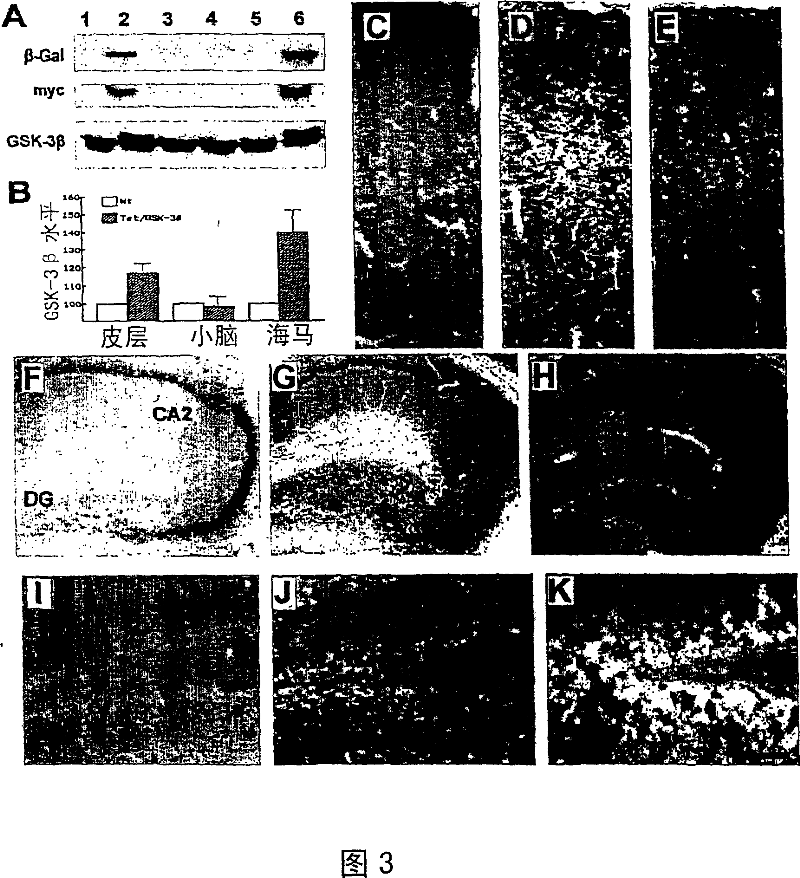Model for neurodegenerative disease
A technology of transgenic animals and animals, applied in the field of neurodegenerative diseases, can solve the problem of knowing downstream intracellular effectors
- Summary
- Abstract
- Description
- Claims
- Application Information
AI Technical Summary
Problems solved by technology
Method used
Image
Examples
Embodiment approach
[0022] We preferentially used the tet-regulatory system in mice. This tet-regulatory system has been used for conditional gene expression in eukaryotic cell systems and in mice (Gingrich and Roder, 1998). By using this system to prime the transgenic expression of mutant types of huntingtin, some of us have recently established the first conditional animal models of neurodegenerative diseases (Yamamoto et al., 2000). The tet-regulatory system is particularly useful when mimicking pathological conditions, as it can be used to: prevent perinatal lethality due to transgene toxicity, initiate transgene expression only in adulthood, and once the associated phenotype changes That is, transgene expression is stopped (Kelz et al., 1999; Yamamoto et al., 2000).
[0023] Regulation of this system is achieved by tetracycline-regulated transactivator (tTA), a chimeric protein consisting of a tet-repressor DNA-binding domain and a VP16 transactivation domain ( Gossen and Bujard, 1992). T...
Embodiment
[0026] The present invention is further illustrated by the following examples of our experimental work. Generation of injection fragments
[0027]The 8.0 kb Ase I fragment (BitetO) was used for microinjection. To generate BitetO, the 1.5 kb Hind III fragment corresponding to the Xenopus GSK-3β cDNA with the N-terminal MYC epitope was excised from the pcDNA3-GSK3 plasmid (Sanchez et al., 2000). This fragment was subcloned into the pCRII cloning vector (Invitrogen) digested with Hind III. Digest with XhoI to test for correct orientation. Then, by Nsi I-Not I digestion, a 1.5 kb fragment was excised and subcloned into the Pst I-Not I site of a plasmid containing a bidirectional tetO sequence that was replaced by a giant lacZ reporter gene sequence. Cytovirus (CMV) minimal promoter flanking (pBI-3, (Baron et al., 1995)). Finally, the 8.0 kb Ase I BitetO fragment was microinjected into single-cell CBAxC57BL / 6 embryos. Founder mice were identified using PCR and confirmed by Sou...
PUM
 Login to View More
Login to View More Abstract
Description
Claims
Application Information
 Login to View More
Login to View More - R&D
- Intellectual Property
- Life Sciences
- Materials
- Tech Scout
- Unparalleled Data Quality
- Higher Quality Content
- 60% Fewer Hallucinations
Browse by: Latest US Patents, China's latest patents, Technical Efficacy Thesaurus, Application Domain, Technology Topic, Popular Technical Reports.
© 2025 PatSnap. All rights reserved.Legal|Privacy policy|Modern Slavery Act Transparency Statement|Sitemap|About US| Contact US: help@patsnap.com



